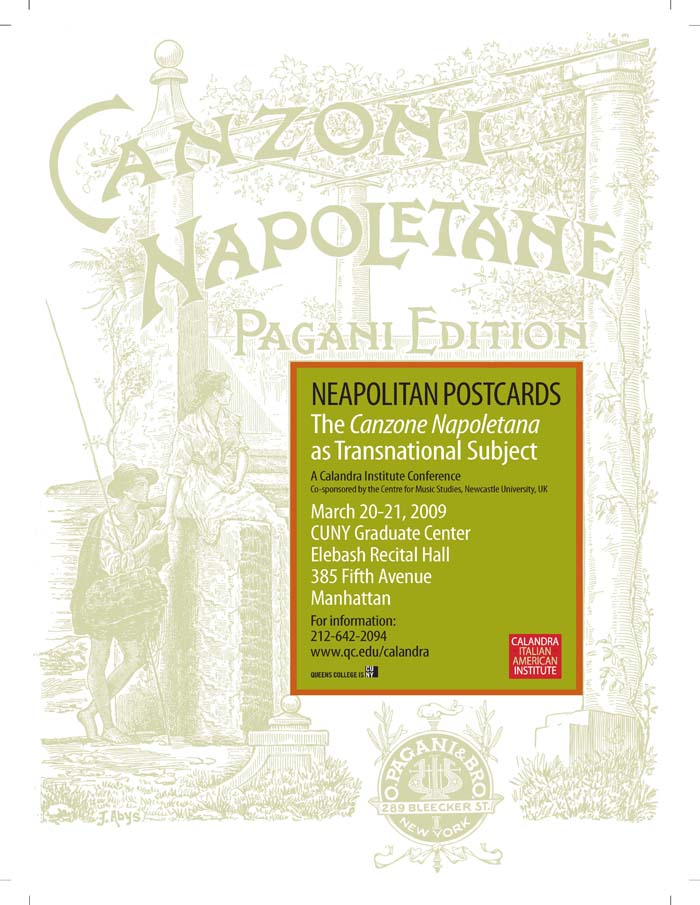
Neapolitan Postcards: The Canzone Napoletana as Transnational Subject
Presented in conjunction with the exhibition “Chist’è New York: The Mark Pezzano Collection of Neapolitan Sheet Music from New York.”
The canzone napoletana (Neapolitan song) has been one of the first international popular musics of the modern era, traveling beyond the city of Naples and the borders of Italy. Its success was due largely to Italian emigrants who composed, performed, recorded, sold, and consumed the music in the forms of sheet music, piano rolls, 78 rpm recordings, and performances. Classic songs like “Core ‘ngrato” (1911), “Senza Mamma” (1925) and “A cartulina ‘e Napule” (1927) were composed and introduced in New York City, and a version of the Piedigrotta Neapolitan Song Festival was held in Harlem during the 1920s. During this period, the larger American public was enjoying the Neapolitan song at the same time Italian immigrants were victimized as racialized others. In Argentina, artists adapted Neapolitan melodies to the tango’s rhythms, as did Carlos Gardel with his 1931 hit song “Como se canta en Nápoles.” Over the course of the twentieth century, singers and musicians such as the Andrews Sisters, Charles Aznavour, Count Basie, Elvis Presley, Violeta Rivas, Caetano Veloso, Frank Zappa, and others would record and further disseminate the Neapolitan song internationally. This conference is a unique opportunity to address the relatively unexplored transnational aspects of the Neapolitan song.

Recent Comments